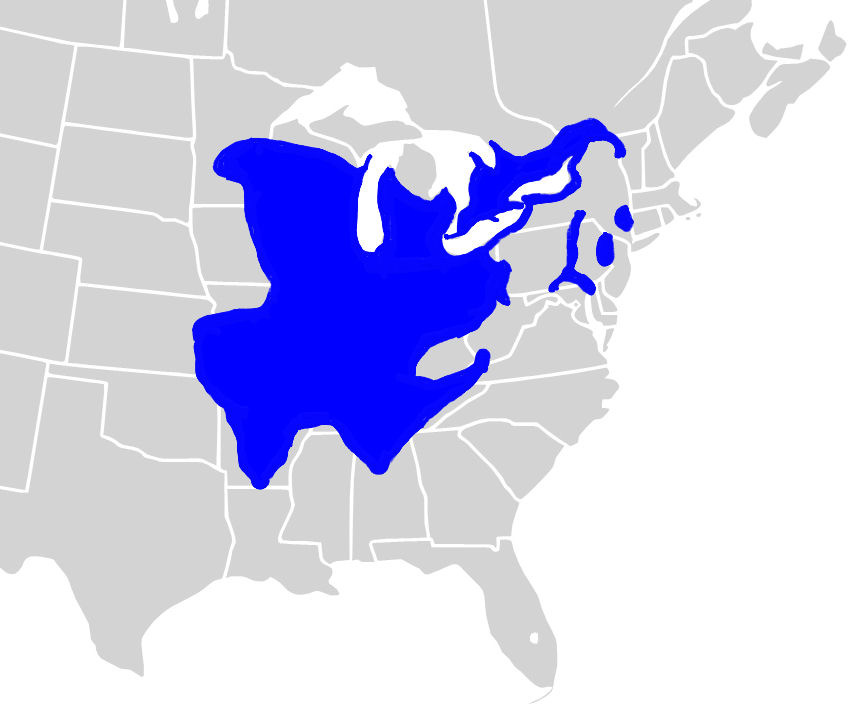
Connu aussi comme
- Želva mississippská
Poids et mesures
| Longueur | de 12 à 25 cm |
|---|
Description de l'animal
The Mississippi map turtle, scientifically known as Graptemys pseudogeographica kohnii, is a captivating aquatic species belonging to the family Emydidae. This fascinating turtle is predominantly found in the rivers and waterways of the central United States, especially within the Mississippi River system, from which it derives its common name. The species is characterized by its distinctive physical appearance and behaviors, making it a subject of interest among herpetologists and turtle enthusiasts alike.One of the most striking features of the Mississippi map turtle is its beautifully patterned carapace (shell). The carapace is typically olive to dark brown in color, adorned with a complex pattern of light yellow to orange lines that resemble the contours of a map, hence the name "map turtle." These lines are more pronounced in juveniles and tend to fade as the turtle ages. The carapace is also somewhat oval in shape and exhibits a slight keel down its center, which becomes less prominent in older individuals. The edge of the carapace is serrated, adding to the turtle's distinctive appearance.
The plastron (the underside of the shell) is usually yellowish, with a dark, blotchy pattern that varies among individuals. The skin of the Mississippi map turtle is greenish to brown, with yellow stripes on the head, legs, and tail, further enhancing its intricate appearance. Males and females can be distinguished by their size and physical characteristics. Females are significantly larger than males, with carapace lengths reaching up to 10 inches (25 cm), while males usually do not exceed 5 inches (13 cm). Males possess longer and thicker tails, and their front claws are elongated, which are used in courtship displays.
Mississippi map turtles are highly aquatic but are known to bask frequently on logs or rocks protruding from the water. They are agile swimmers, with webbed feet that aid in their aquatic lifestyle. Their diet primarily consists of aquatic invertebrates, such as insects and mollusks, but they also consume plant matter, making them omnivorous.
Breeding takes place in spring, and females lay their eggs on sandy or muddy banks. Clutch size varies but typically contains between 6 to 12 eggs, which hatch after about 60 to 70 days. The sex of the hatchlings is determined by the temperature at which the eggs are incubated, a phenomenon known as temperature-dependent sex determination.
Despite facing threats from habitat destruction, pollution, and the pet trade, the Mississippi map turtle is not currently listed as endangered. However, its reliance on clean, flowing waterways makes it vulnerable to environmental changes. Conservation efforts aimed at preserving its natural habitats are essential for the continued survival of this unique species.
In summary, the Mississippi map turtle is a visually striking and ecologically significant species that embodies the beauty and complexity of North America's river ecosystems. Its distinctive appearance, coupled with its fascinating behaviors, make it a remarkable subject of study and admiration.
Carte de répartition

Animaux similaires
Nouvelles photos d'animaux
Top 10 des animaux
- Dolphin gull (Leucophaeus scoresbii)
- Diana monkey (Cercopithecus diana)
- Moustached guenon (Cercopithecus cephus)
- Galápagos tortoise (Geochelone nigra complex)
- Russian tortoise (Testudo horsfieldii)
- Japanese macaque (Macaca fuscata)
- Stone loach (Barbatula barbatula)
- Greek tortoise (Testudo graeca)
- Common flying dragon (Draco volans)
- Colossal squid (Mesonychoteuthis hamiltoni)

